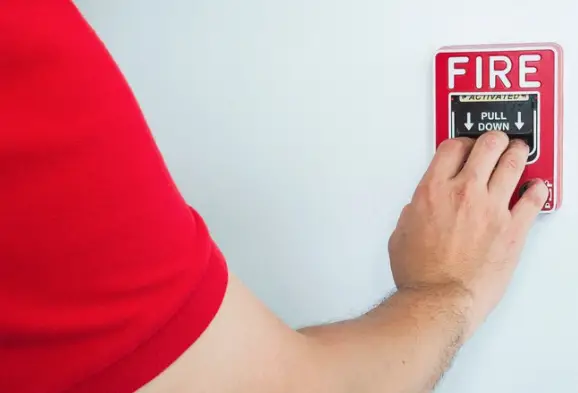Introduction:
Our homes are sanctuaries, a place of comfort and safety. However, the threat of fire is an ever-present concern that can disrupt this haven. Taking proactive measures for home fire protection is crucial for the safety of your loved ones and the preservation of your property. In this comprehensive guide, we'll delve into the essentials of proper fire alarm installation for home fire protection, covering everything from smoke detectors to fire extinguishers and escape plans.
1. The Foundation: Smoke Detectors
The backbone of any home fire protection plan is a reliable smoke detector system. Properly installed and maintained smoke detectors act as the first line of defense, alerting occupants to the presence of smoke and potential fire. Here's a step-by-step guide to ensure you get the most out of your smoke detectors:
Installation:
- Place smoke detectors in every bedroom, outside each sleeping area, and on every level of your home.
- Install detectors on the ceiling or high on the wall, as smoke rises.
- Avoid placing detectors near windows, doors, or vents, as these areas may affect their performance.
Maintenance:
- Test smoke detectors monthly by pressing the test button.
- Change batteries at least once a year or when the low-battery warning chirps.
- Replace smoke detectors every 10 years to ensure optimal performance.
2. Fire Extinguishers: Your First Responder
While smoke detectors alert you to the presence of a fire, fire extinguishers empower you to take immediate action. Proper installation and understanding their use are essential components of a well-rounded home fire protection plan.
Placement:
- Install fire extinguishers in easily accessible locations, such as the kitchen, garage, and near bedrooms.
- Mount extinguishers on the wall at eye level, ensuring they are not obscured by furniture or other items.
- Keep a fire extinguisher in the vicinity of potential fire hazards, like stoves or electrical panels.
Types of Fire Extinguishers:
- Familiarize yourself with the five main classes of fire extinguishers: A, B, C, D, and K.
- Choose extinguishers based on the potential fire hazards in specific areas of your home.
- Ensure that every family member knows how to use a fire extinguisher following the PASS method: Pull, Aim, Squeeze, and Sweep.
3. Escape Plans: Preparation is Key
In the event of a fire, having a well-thought-out escape plan is crucial for the safety of everyone in your household. Follow these guidelines to create an effective escape plan:
Family Meeting:
- Gather your family to discuss and create a detailed escape plan.
- Identify two escape routes from each room, if possible.
- Practice the escape plan regularly, ensuring everyone is familiar with the routes.
Emergency Contacts:
- Save emergency contact numbers in your phones and teach children how to call for help.
- Designate a meeting point outside your home where everyone can gather after evacuating.
Emergency Essentials:
- Keep a basic emergency kit near your designated meeting point.
- Include essentials like a flashlight, first aid supplies, and a list of emergency contacts.
**4. Electrical Safety: The Silent Threat
Electrical malfunctions are a common cause of home fires. Proper installation and maintenance of your home's electrical systems can significantly reduce this risk.
Regular Inspections:
- Schedule routine inspections by a qualified electrician to identify potential hazards.
- Check for overloaded outlets and replace any damaged or frayed cords immediately.
Upgrading:
- Consider upgrading your home's electrical system if it is outdated.
- Install arc fault circuit interrupters (AFCIs) to detect and mitigate electrical arcing, a common precursor to electrical fires.
5. Cooking Safety: Preventing Kitchen Fires
The kitchen is often the heart of the home, but it's also a common source of fires. Proper installation of fire prevention measures in the kitchen is essential.
Appliance Placement:
- Keep flammable items, such as dish towels and paper towels, away from the stove.
- Install a fire-resistant mat under your stove to catch any spills or splatters.
Cooking Supervision:
- Never leave the kitchen unattended while cooking, especially when using the stove or oven.
- Install a smoke detector in or near the kitchen to provide an early alert in case of smoke.
6. Heating Safety: Stay Warm, Stay Safe
During colder months, heating appliances become essential, but they also pose fire risks. Proper installation and maintenance are key to safe heating.
Space Heaters:
- Keep space heaters at least three feet away from flammable materials.
- Plug space heaters directly into outlets, avoiding the use of extension cords.
Chimney Maintenance:
- Have your chimney inspected and cleaned annually by a professional.
- Install a spark arrester on the chimney to prevent sparks from igniting nearby vegetation.
7. Outdoor Fire Safety: Protecting Your Perimeter
While we often focus on fire safety indoors, it's equally important to extend these precautions to the outdoors.
Clearing Debris:
- Regularly clear dry leaves, dead branches, and other combustible materials from your yard.
- Trim trees and bushes to create a defensible space around your home.
Fire-resistant Landscaping:
- Choose fire-resistant plants and materials for landscaping.
- Create a non-combustible zone around your home by using gravel or stone.
Conclusion:
Home fire protection is a shared responsibility that starts with proper installation and maintenance of fire safety measures. By implementing the guidelines provided in this ultimate guide, you are taking significant strides towards creating a safer living environment for yourself and your loved ones. Remember, the investment in home fire protection is an investment in peace of mind and the well-being of those who matter most. Stay vigilant, stay informed, and let your home be a sanctuary where the warmth comes from shared moments, not from uncontrolled flames.





